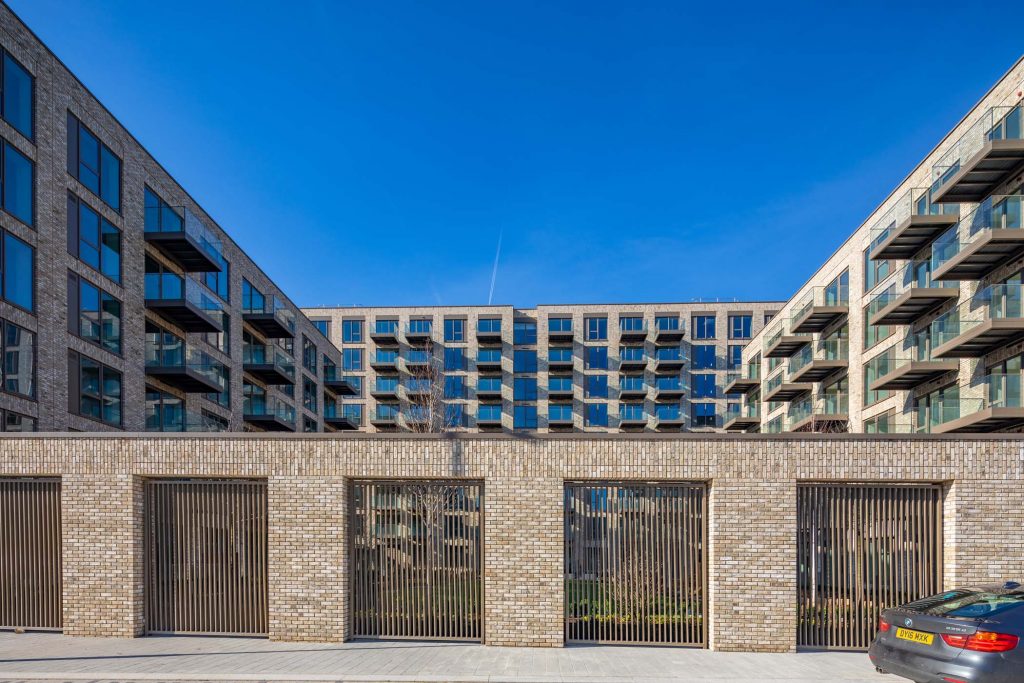
Expected Levels of Performance with Aluprof
 This article sees Aluprof UK Limited‘s MD Wojciech Brozyna question the performance of any installed system to meet its specified performance.
This article sees Aluprof UK Limited‘s MD Wojciech Brozyna question the performance of any installed system to meet its specified performance.
There are many factors that effect performance, a few are covered here, as well as some suggestions for improved installation. It is the recognition of these current supply chain scenarios which help us to design better systems for our customers.
Systems Fabrication and Real Life Performance
As we specify architectural aluminium systems for many of our commercial buildings and a growing number of new and improved residential dwellings, we often refer to a systems company specification for the weather performance of the product required.
Often the weather rating of the product specified will be much higher than that required at the location, but in some circumstances, given the location, the system or product will be expected to perform to its limits.
Given that each fabricator/installer will have a different production facility, fabricators at various levels of experience, with installers facing increased challenges on site, it is safe to assume that not all fenestration systems installed will meet the stated specification performance.
Whilst the industry, including Aluprof UK, is investing heavily in training of fabricators and installers, we cannot expect to have each installation to perform exactly as specified. As mentioned earlier, as most specifications exceed the requirements on site and does not become an issue, but when weather conditions for a given products location approach that specified, problems can arise.
Systems design and testing
When systems companies design products, they do so given known parameters for weather performance, such as various air leakages for a given type of weatherseal or gasket, and the well known principles of ‘balanced cavity’ design.
Once designed and extruded, the system is carefully fabricated, glazed, and installed perfectly square in a test rig and tested to the designed levels of performance.
This fabrication and test method does not necessarily mimic the mass production of product and vagaries of site installation, but does offer a performance level that we can judge and compare systems.

Testing standards and procedures
We have various test standards for windows doors and curtain walls that stipulate the exact test procedures and the minimum requirement for test equipment, standards also call for UKAS accreditation to ensure accuracy of equipment gauges and pressures.
When fabricating our test samples they are made with testing in mind so gaskets are tight in the corners, weatherseals new and resilient, often with framed corners glued carefully to ensure watertightness, all in accordance with the systems company technical manual.
Installed perfectly square and fully adjusted once in the test cabinet, this gives the product the best chance of offering a good performance level, but is it indicative of a typical installed production sample?
A further question, do our test standards really meet the requirements of weather performance for any given site location? Quite a few years ago we were still testing curtain wall systems to BS 6375 ‘Performance of windows and doors’ until CWCT developed a new curtain wall test standard which has become the accepted standard test for curtain walls in the UK and overseas.
Experience would show that most locations of product fall well within given standards, but there can be exceptions.
Systems fabrication
Let’s start with the fabrication of product, the more complex the design, the more likely shortcuts in fabrication will occur, these may be very small, as mentioned before, where the technical manual requests the application of sealant to weatherseal corners which is crucial to meet high performance.
Some systems, such as stick curtain wall, are fabricated on site and not always in the best of weathers, so we need to know that all the components are fitted with the correct sealants, under the correct weather conditions, before pressure plating and capping up.
Hardware options can also change the performance of a window, guidance must always be sought from the systems provider to ensure that any hardware specified will maintain the performance of the product.
Often the lack of understanding or confusion of drainage options can have a detrimental impact on systems performance.
The key here is for a main contractor to choose their fabricator/installer wisely ensuring that they have the required knowledge, experience and training in the type of installation required.
Sadly all too often projects are still awarded on price and often through fabricators who do not have the required experience.

Systems installation
It is well known that off-site production can be well controlled in a heated and well lit factory space, conditions on site during installation can be quite the opposite.
Finding openings that are not square, dpc’s in the wrong place, levels incorrect and poor access, to name a few of the challenges that face the installer.
These issues all have a bearing on the products performance and often come under time pressures, as the contractor urgently needs Fenestration to be fitted to close off the building for following trades, this all means crucial changes can be difficult to be made in time.
Obviously a lot comes down to the contracts manager’s experience and early identification of issues prior to product arrival on site can assist a smooth installation.
However there is little you can do on site when the main contractor calls off a phase of windows or curtain wall out of sequence, that’s not been made!
Training and understanding system performance
Key to getting a quality installation is for the installer to be fully aware of the products fabrication and correct installation. Any shortcomings, however small, can be contained on site and completed during or after installation.
Given this experience, the installer’s Site Manager can ensure product is made and fitted correctly to the fabricators agreed tolerances.
Even prior to arriving on site discussions should have taken place with the architect to review proposed openings and any structural fixings for systems.
Crucial to curtain wall, fixings must be agreed and the loadings that they will need to carry, but often window and door systems will need structural fixings to ensure frames remain square in operation.
The selection of system and advise from the specialist sub-contractor should also be discussed. For example, flush threshold French doors on a high rise apartment block would need special consideration regarding weather ratings.
Would a lift and slide door offer a better solution for a flush threshold condition as they carry an improved weather rating?
A working knowledge of the ‘balanced cavity’ principle, which helps the products internal drainage system to work effectively despite varying outside pressures, is also crucial to understand and highlight correct fabrication and installation.
Knowing this principle may raise questions on an installation making the person responsible, reach for the products technical manual to check.
Quality vs Performance
Quality of fabrication will also have a bearing on performance, if mitres or butt joints are not cut correctly leaving then slightly open and adhesive not used or used incorrectly, can result in joint leakage and often failure of the powder coat finish.
Swarf from machining left inside the system can often block drainage routes over time.
Time vs Performance
When we are aware that a system will likely be installed in a location which will test its performance, such as products used at height, it would be wise to take additional time in fabrication and installation to ensure everything is completed exactly to the manual.
Systems company support should be requested in these areas to explore their experience of critical areas of fabrication and installation.
Age vs Performance
Over time glazing gaskets and weatherseals can compress with a slight lowering of performance. Over time, locking hardware will require adjustment to ensure adequate weatherseal compression.
Should products be used in conditions near to their stated performance then routine maintenance should be undertaken to ensure product performance is maintained during the life of the product.
Recognition by Aluprof and future design for fabrication
All the above issues fall within two areas of concern for Aluprof. The first being training and competence of the supply chain from system to installed product.
Aluprof offer regular training courses for their customers to ensure quality of fabrication and understanding of the complete process through to installation.
The second is the understanding of fabrication and installation parameters for the average fabricator. This allows for a better design to cater for some production and installation tolerances.
Understanding the issues of day to day tolerances also allows for crucial areas of fabrication to be explored and critical areas to be either highlighted or redesigned to reduce the potential issue and maintaining the products performance.
It’s a cyclical process, and one Aluprof have long recognised as crucial to today’s product design and performance.
Aluprof UK
Unit A5
Altrincham Business Park
Stuart Road
Altrincham
Cheshiire
WA14 5GJ
UK
(0044) 161 941 4005
Visit Supplier's page
Latest news

28th March 2025
Ideal Heating Commercial announces 10-year warranty on Evomax 2 boiler
Evomax 2, the UK’s number one selling commercial wall-mounted boiler from Ideal Heating Commercial, is now available with a 10-year warranty.
Posted in Articles, Building Industry News, Building Products & Structures, Building Regulations & Accreditations, Building Services, Facility Management & Building Services, Heating Systems, Controls and Management, Heating, Ventilation and Air Conditioning - HVAC, Innovations & New Products, Pipes, Pipes & Fittings, Plumbing, Retrofit & Renovation, Sustainability & Energy Efficiency, Videos
28th March 2025
FLIR Si1-LD Acoustic Imaging Camera for Compressed Air Leak Detection
FLIR, a Teledyne Technologies company, introduces the Si1-LD, an industrial acoustic imaging camera that brings faster and more accurate compressed air leak detection to those operating on a modest condition monitoring budget.
Posted in Acoustics, Noise & Vibration Control, Articles, Building Industry News, Building Products & Structures, Building Services, Facility Management & Building Services, Information Technology, Innovations & New Products, Retrofit & Renovation, Sustainability & Energy Efficiency, Thermal Imaging and Monitors
28th March 2025
LIFTEX 2025 Seminar programme announced
Registration has opened for LIFTEX 2025. Now in its 37th year, LIFTEX 2025 is the UK’s only dedicated exhibition for the lift, escalator and access industry and takes place only once every three years.
Posted in Access Control & Door Entry Systems, Accessibility, Articles, Building Industry Events, Building Industry News, Building Products & Structures, Building Regulations & Accreditations, Building Services, Exhibitions and Conferences, Facility Management & Building Services, Health & Safety, Retrofit & Renovation, Security and Fire Protection, Seminars
28th March 2025
MCRMA welcomes ArcelorMittal UK to membership
A UK division of the global steelmaking business ArcelorMittal has become the latest new member of the MCRMA, the industry association representing the metal building envelope sector.
Posted in Articles, Building Associations & Institutes, Building Industry News, Building Products & Structures, Building Systems, Cladding, Facades, Posts, Restoration & Refurbishment, Retrofit & Renovation, Roofs, Steel and Structural Frames, Walls
 Sign up:
Sign up: